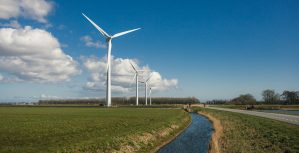Top energy saving tips for your home
Wasting electricity can not only have a negative impact on the environment, it can also have a negative impact on your bank balance too. However, there are a few small steps that you can take to make sure you’re using less electricity and saving money in the long run.
Quite often the environmental benefits of purchasing new builds is overlooked. A new build home by its nature will be fitted with modern appliances that are energy efficient, and the structure will be well insulated from the outside.
In this article, we go through everything from switch off lights to insulating your home to help you find easy ways to reduce the amount of electricity and energy that you use. Read on to discover our top 5 ways to save energy at home.
1. Invest in efficient appliances
In many instances, you have to spend money to save money and this is the case with your home’s electrical appliances. However, this doesn’t mean that you rush out to replace your current appliances with new, more efficient models.
Instead, make sure to consider the energy-efficiency rating (EPC rating) of appliances such as washing machines, dryers and fridges, when your current appliances have reached the end of their lifetime and need replacing.
The higher the energy-efficiency rating the better, and the scale ranges from G, the worst possible rating, all the way to A which is the best possible EPC rating. The higher the rating, the more money and energy you can save over time.
2. Wash your clothes at a lower temperature
One of the easiest ways of saving energy at home involves washing your clothes at a lower temperature. By lowering your washing temperature by 10 degrees celsius i.e. running a cycle at 30 degrees rather than 40 degrees, you can save up to a third of the costs.
As for drying your clothes freshly washed clothes, it’s best to ditch your tumble-dryer and dry them on an airer or washing line instead. Whilst you can now get more energy-efficient tumble dryers for your home, if you’re able to survive without one this is an easy way to save the environment and save on energy costs.
3. Turn off unused lights
Switching off lights that are no longer in use is one of the oldest energy saving ideas in the book but the principle still rings true.
No matter whether you use incandescent bulbs, LEDs or halogen bulbs in your house, you will always benefit from turning off the unused lights around your home.
Top tips: If you find that you or your family members struggle to remember to turn the lights off, why not invest in lighting timers? These turn lights of at set times so that you don’t have to worry about manually switching off the lights around you home.
4. Switch off appliances that are on standby
Many appliances use energy whilst they’re on standby, which is why it’s important to make sure your gadgets are completely switched off when they’re not in use.
One of the easiest ways to identify if your appliances are on standby rather than switched off, is by touching the appliance and seeing if there is any heat and checking if the standby light is on. If so, it’s likely that that gadget is still using electricity, therefore, it will need to be switched off at the mains socket or unplugged completely.
5. Get loft insulation for your home
Getting loft insulation for your home could see you saving an average of £128 per year on your home’s fuel bills, and best of all, you may be able to insulate your loft for free.
Some providers offer free loft insulation under the ECO scheme, however, you will need to meet certain eligibility criteria.
However, even if you aren’t eligible for free loft insulation, it’s an option worth considering as you can save a significant amount of energy over time.
No matter how small you start when it comes to saving energy, you’ll soon reap the rewards of lower energy bills and lessening your environmental impact.
Share It on :





